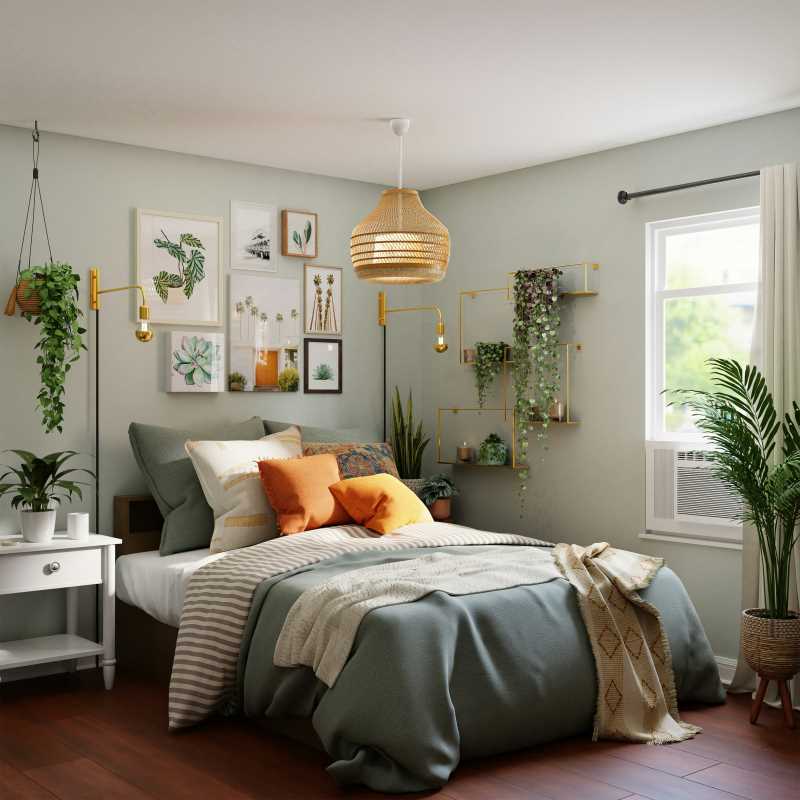Natural light can transform your home, making it feel more inviting, vibrant, and uplifting. It has proven health benefits, from boosting your mood to improving focus and even enhancing your quality of sleep. If you’re looking to create a brighter, healthier space for your family, you’ll be happy to know there are plenty of simple and effective ways to make the most of natural light. No matter the size or layout of your home, these strategies will help bring the sun’s warmth and brightness indoors.
Choose Light-Friendly Window Treatments
Heavy, dark curtains can make any room feel smaller and block valuable natural light. By swapping them for lighter window treatments, you can instantly upgrade the brightness level in your home. Sheer, airy drapes are a great option as they diffuse light beautifully, softening its intensity while maintaining a flood of sunlight.
If you’re dealing with bedrooms or bathrooms where privacy is important, consider top-down, bottom-up shades. These innovative window coverings offer the best of both worlds, allowing you to manage privacy while still letting sunlight filter through. They’re especially helpful for families living in close-packed neighborhoods or apartments.
Practical tip for parents: Use tiebacks to keep curtains pulled to the sides during the day. Younger kids will enjoy helping "tie up the sunshine" each morning, turning it into a fun daily habit.
Keep Windows Clean and Unobstructed
Clean windows don’t just look better; they also allow more light to stream into your home. Regular cleaning is particularly important for families with kids, as little handprints, fingerprints, and smudges can accumulate quickly.
Get the whole family involved by turning window cleaning into a quick group chore. Younger kids can help wipe down sills, while older ones can spray and wipe windows (with supervision, of course).
Also, take a moment to step back and observe if furniture or items are blocking the light’s path. A large bookshelf or couch positioned near a window can unintentionally dim a space. Rearrange furniture to maintain an open line of sight to your windows.
Use Mirrors to Reflect Light
Mirrors are one of the most powerful tools for brightening a room. When positioned strategically, they can make small spaces feel larger and amplify natural light. Place a large mirror directly opposite a window to reflect light back into the room.
Want to make a hallway or a dimly lit corner feel more inviting? Hang mirrors in clusters to not only reflect sunlight but also add visual interest. For a subtle touch, use metallic or shiny picture frames for family photos and artwork. These small details bounce light in a way that draws the eye and brightens the space.
Bonus tip for families: Opt for shatter-resistant mirrors if you have young children. They’re safer and practical while still delivering that sunlight-boosting effect.
Opt for Lighter Colors
The colors in your home play a significant role in how light travels within it. Darker shades absorb light, making rooms feel cozier but dimmer. On the other hand, lighter shades like off-white, soft pastels, or even pale gray work as excellent light reflectors. These colors help bounce natural light around the room, creating an open, airy effect.
If you’re feeling adventurous, consider painting your ceiling in a subtle glossy finish. This small but impactful change helps reflect light downward, further illuminating your spaces.
For kids’ rooms, you can opt for bright and cheerful palettes like yellows, light blues, or mint greens. Not only do they reflect light well, but they also create a lively atmosphere that children love. Choose light-colored furniture or bed linens to complement the look.
Trim Outdoor Foliage
Overgrown shrubs, trees, or plants near your windows may provide shade, but they could also be blocking much-needed sunlight. By trimming overgrowth and keeping vegetation managed, you create opportunities for more sunlight to pour in.
For parents, this is a great chance to teach children about gardening. Encourage them to help prune bushes or plant sun-friendly flowers near your windows. It’s not just about enhancing the indoor lighting experience; you’ll also create a welcoming outdoor space that reflects natural beauty.
Pro tip for apartment dwellers or families with limited gardening options: Consider using potted plants indoors. Just be sure they don’t block the windows!
Go Minimal With Decor
Sometimes, less really is more. Heavy furniture, cluttered corners, and shelves piled high can obstruct light and make spaces feel cramped. Opt for lower-profile furnishings that don’t compete with the sunbeams. For example, a compact sofa with sleek legs can allow light to filter through beneath, whereas a hefty sectional couch might cast unnecessary shadows.
Teach older kids the benefits of tidying up by turning it into a game or challenge, like “Who can clear their desk fastest?” A clutter-free room allows natural light to travel unimpeded, and it creates a more pleasant living environment overall.
Bonus tip for parents of little ones: Invest in open storage bins or easy-to-reach cubbies. They’ll make clean-up faster and keep the flow of light uninterrupted.
Add Transom or Interior Glass
If your budget allows for small renovations, transom windows or glass-paneled interior doors are excellent investments. These stylish additions bring even more sunlight into deep hallways, connecting spaces, or rooms that sit far from exterior windows.
This option works particularly well in older homes, which might have dark, segmented layouts. A simple transom window above a door can illuminate a previously dull hallway with just the right splash of natural light.
Parents’ note: If you’re worried about privacy in rooms like bathrooms, opt for frosted or textured glass, which allows light in while maintaining privacy.
Choose Glossy or Reflective Surfaces
When evaluating your home’s decor, look for opportunities to incorporate reflective materials. Glossy backsplash tiles in the kitchen or shiny floor sealants in the entryway can be functional yet light-enhancing features. Reflective side tables, glass lamps, or polished stone countertops also bounce light beautifully.
Consider lightweight, reflective fabrics for throw pillows or curtains. Even small accents like vases with a metallic finish or bright ceramic planters can make noticeable improvements to how light moves through a room.
Open the Floor Plan
Although large renovations may require more planning, opening up your home’s layout could significantly improve how sunlight travels through your space. Knocking down unnecessary walls or widening an archway between rooms can help light flow naturally, creating a seamless and brighter environment.
For smaller budgets, try smaller tweaks like rearranging furniture to remove visual blockages and keep rooms feeling open. Always start with lightweight, movable items before committing to significant changes.
Pro tip for families with young kids: Use translucent room dividers or lightly frosted partitions to create play zones without entirely blocking the light.
Make It a Family Habit
Natural light isn’t just great for brightening rooms; it’s also a fantastic way to connect as a family. Start each day by opening the curtains or shades together, encouraging everyone to enjoy how sunlight transforms different spaces throughout the day.
Teach children about the importance of natural light for their health. Explain how exposure to daylight can help improve mood, regulate sleep, and even support concentration during study or playtime. You could even incorporate daily walks in the morning light as part of a healthy family routine.
Make this a shared value in your household by looking for little ways to involve everyone. Maybe it’s playing a “spot the sunniest corner” game or letting kids decide which rooms should get a mirror upgrade to catch more light.
The Sunshine Effect
A brighter home is about creating an environment that promotes well-being, joy, and comfort for your entire family. By making small adjustments or even planning bigger projects, you can invite more natural light into your living spaces, creating a sanctuary for family life.







